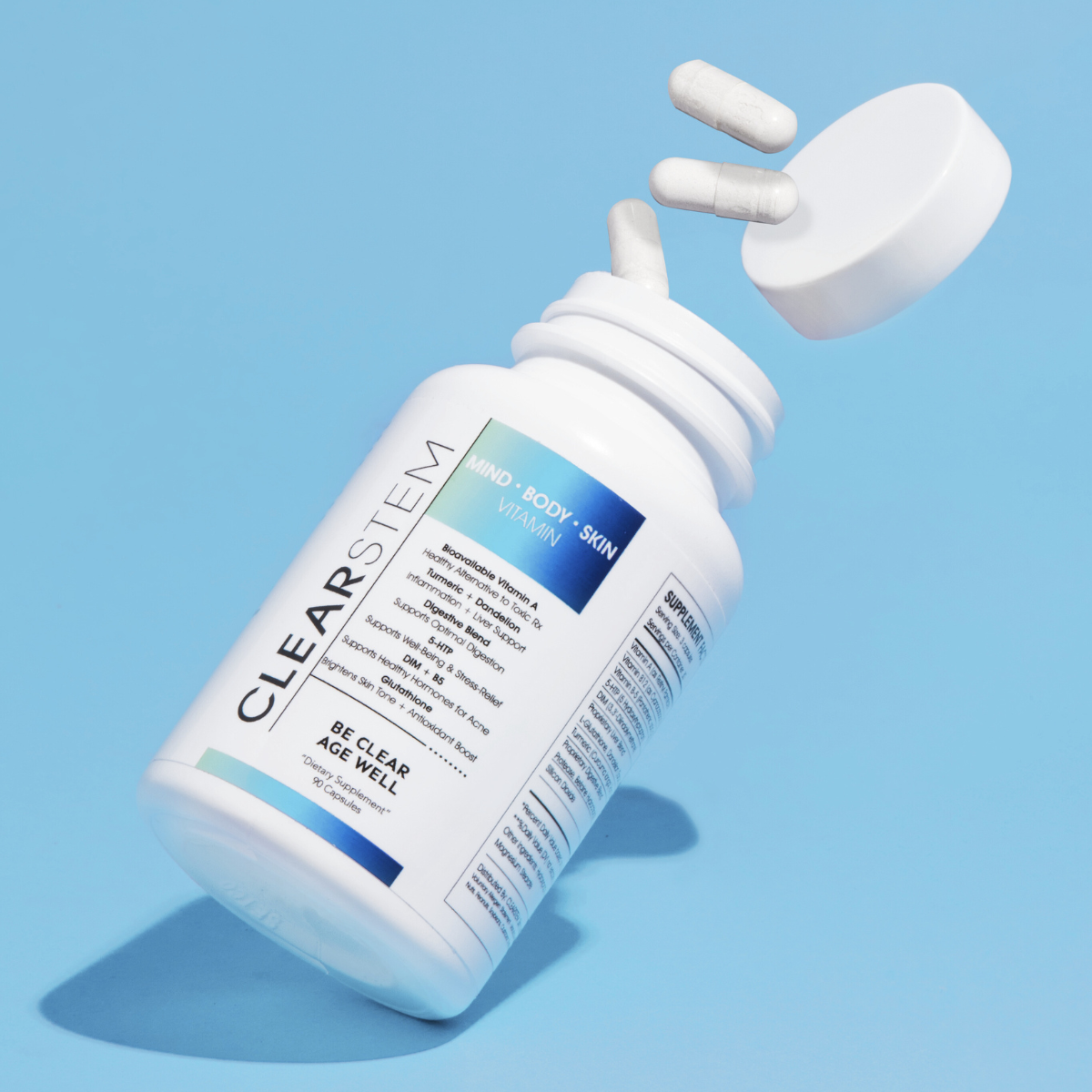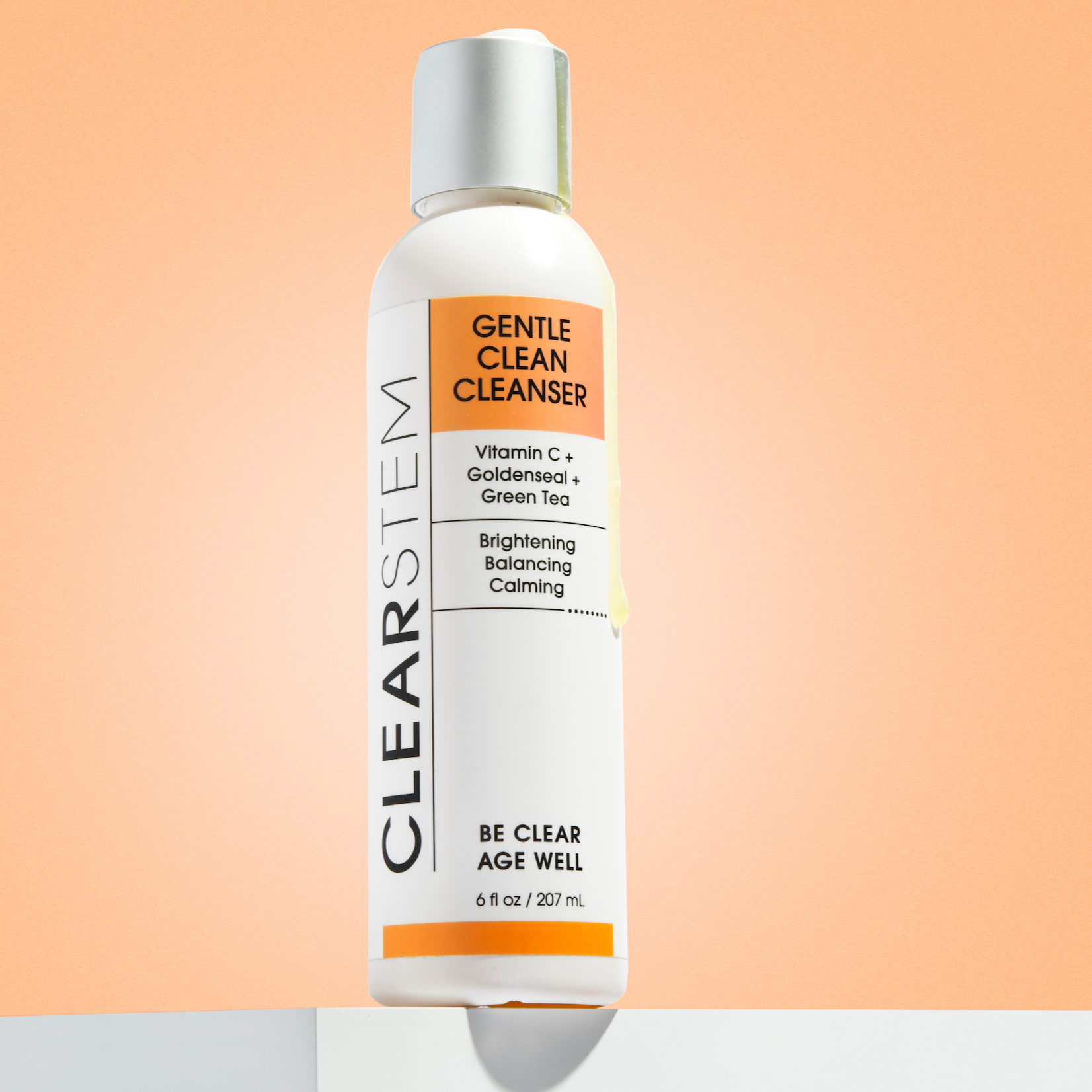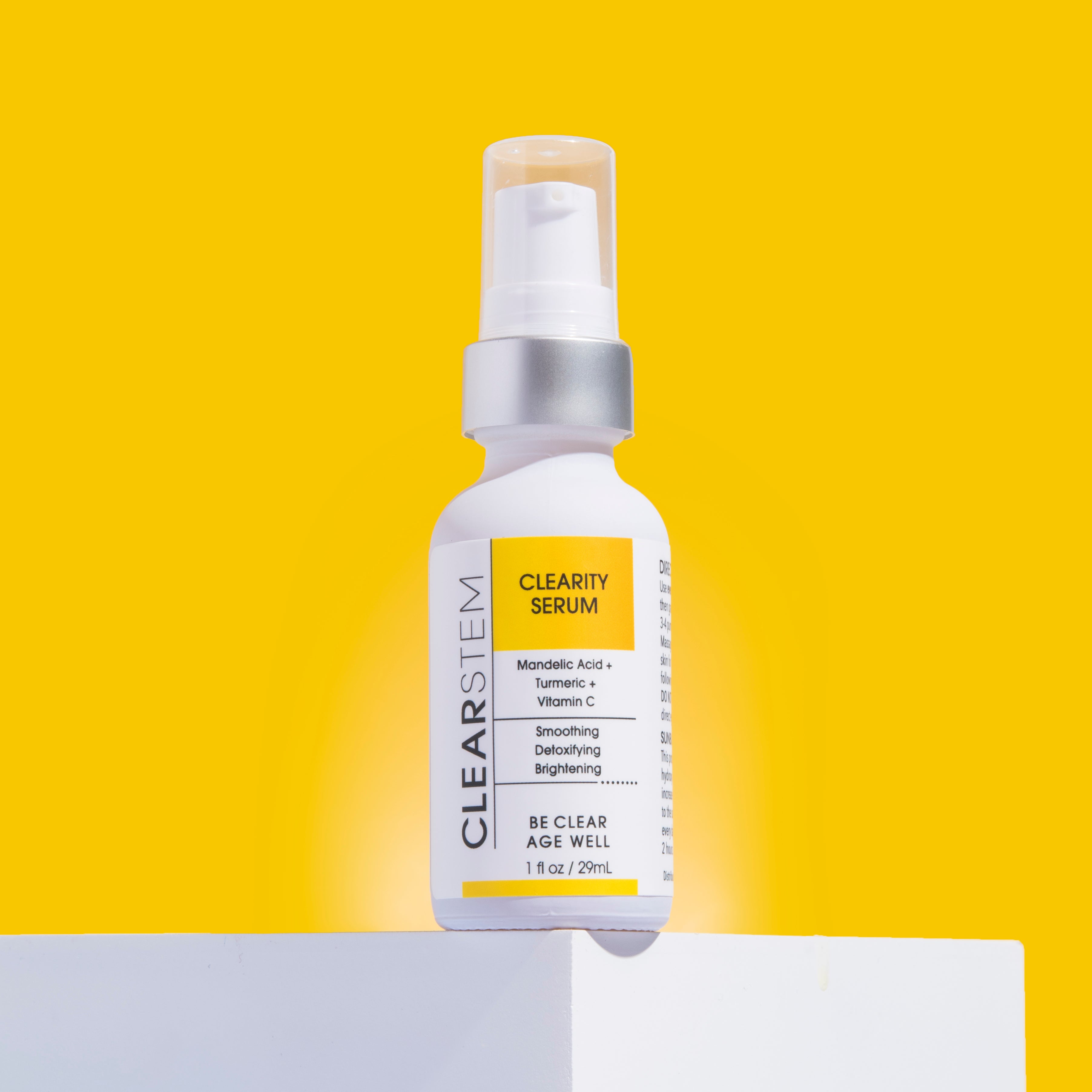Waking up to a blemish can be a disheartening experience, especially if you have a special event coming up soon. If you’re in this position, you may be wondering, “How long do pimples last?” You may even be considering attempting an at-home extraction to speed up the skin cell turnover process.
Before you pop that pimple, it’s important to understand the stages of acne development and healing. On average, mild pimples can clear up within three to seven days.1 More severe forms of acne can take several months to resolve.2 Ultimately, the length of time it takes to get rid of a pimple depends on the type of acne you’re dealing with.
In this article, we’ll discuss how long different types of pimples last. We’ll also provide some acne treatment tips so you can clear up your skin as soon as possible.
The Three Stages of Pimple Development
To start, let’s discuss the stages of a pimple’s life cycle. Pimples encompass several types of acne, including whiteheads, blackheads, pustules, papules, nodules, and cysts. While these pimples differ in appearance and severity, they move through similar stages. Understanding these stages can help you use the right treatments at the right times.
With this in mind, here are the three stages of pimple development:
-
Stage 1: Before you notice a bump or blemish, it’s likely been brewing beneath the surface for some time. Pimples can start forming a week or so before they rear their ugly heads.3
The initial trigger for acne development is clogged pores. Your pores can become clogged with dirt, oil, dead skin, and other debris. This debris is more likely to plug your pores if you don’t have an effective skincare for acne-prone skin.
Once a pore has become clogged, a microcomedone can quickly develop. Microcomedones are the smallest type of acne blemish—they’re invisible to the naked eye.4 As time passes, these small blemishes can grow in size and turn into whiteheads (aka closed comedones) or blackheads (aka open comedones).
-
Stage 2: The second stage of pimple development occurs when a clogged pore becomes inflamed or infected. Not all pimples make it to this stage; whiteheads and blackheads are two notable exceptions.5 The pimples that progress to this stage do so because they contain trapped bacteria.
As this bacteria brews in your pores, your body attempts to fight the infection by sending white blood cells to the area. 6The resulting inflammation can be painful and cause the pimple to take on a red hue.
-
Stage 3: The final stage of pimple development is when healing starts to take place. As your pimple heals, you may notice that the surrounding skin peels, flakes, or itches. These are normal symptoms of the skin’s natural repair process.7
At this stage, your pimple may also move closer to the skin’s surface. While it’s tempting to pop it at this time, doing so can introduce even more bacteria into the area, setting back the healing process and potentially causing other pimples to develop in close proximity.
Popping your pimples may also worsen your post-inflammatory hyperpigmentation (PIH). PIH is discoloration that develops after your skin has overcome inflammation or an injury.8 PIH typically fades away over time, but picking at your skin can prolong the fading process.
What Are the Different Types of Pimples?
Treatment depends on the different types of acne. Now that you understand the lifecycle of a pimple, let’s dive into the healing timeline and discuss the top treatments for each acne type.
Whiteheads
Whiteheads are small, white blemishes that commonly show up on the forehead, cheeks, chin, and nose.9 Due to their small size and discrete color, these painless pimples are less noticeable than other types of acne.
If left untreated, whiteheads can persist for a long time. Fortunately, you can clear them up within a week or so if you use the right skincare products.
How to Treat Whiteheads
How to clean nose pores? As a milder form of acne, whiteheads are relatively easy to treat. You can often eliminate them by using over-the-counter products containing the following ingredients:9
- Salicylic acid
- Azelaic acid
- Benzoyl peroxide
- Mandelic acid
- Vitamin A
There are many skin types, such as oily skin, dry skin, or combo. If your skin is on the sensitive side, you may want to stick to skincare products that use gentler exfoliating ingredients, such as mandelic acid. At CLEARSTEM Skincare, our CLEARITY® serum contains mandelic acid. As it exfoliates away your dead skin cells, it can unclog your pores and clear up any pesky whiteheads without drying out your skin.
Blackheads
Blackheads are small, dark pimples with open pores. As the debris inside them gets exposed to oxygen, it oxidizes and turns black. Blackheads are most likely to develop on the nose, chin, and cheeks, though they can arise in other parts of the body.10
While blackheads can go away on their own, it depends on how deep they are. Their oxidized debris can become deeply embedded in the pore and difficult to remove without treatment. Thus, untreated blackheads can persist for several weeks.11
How to Treat Blackheads
Blackheads benefit from many of the same skincare treatments as their closed-comedone counterparts.
Our award-winning mandelic acid serum is especially effective for these dark blemishes, so much so that it earned the nickname, “The Blackhead Dissolver.” Supercharged by Vitamin C, this mandelic acid serum can unclog pores and clear out blackheads within 10 minutes.
Pustules
If left untreated, whiteheads and blackheads can eventually transform into pustules. Pustules are a form of inflammatory acne. As a result, they can introduce pain and tenderness into the equation.
Pustules typically last anywhere from a few days to a few weeks.12 You can get rid of them faster by using over-the-counter treatments.
Papules
Papules are similar to pustules—they just haven't developed pus inside them yet. In turn, these red pimples don’t have pustules’ characteristic white center. If bacteria develop within the pores, papules can turn into pus-filled pustules within a few days.13
How to Treat Pustules and Papules
These two mild forms of inflammatory acne can be treated the same way. Products with alpha-hydroxy acid (AHA) are often the most effective. AHA is a powerful exfoliant.14 At CLEARSTEM Skincare, our PREGAME Face Mask x Jess Clarke contains AHA, along with:
- Bamboo
- Botanicals
- Exfoliating fruit acids
Within five minutes, this mask can brighten your skin and unclog any pores that may otherwise develop acne down the line.
As with whiteheads and blackheads, you’ll want to keep your hands off all forms of inflammatory acne. Touching these blemishes only makes the problem worse and drags out the healing process.
Cysts
If whiteheads and blackheads are considered mild acne forms, cysts are on the opposite end of the spectrum. Cystic acne can be quite painful and persistent.
As one of the most severe forms of acne, cysts rarely go away on their own. These large, pus-filled cysts can last anywhere from a few months to several years.15 They typically require professional evaluation and intervention. For instance, you may be prescribed medications to clear them up.
When cystic pimples finally go away, they often leave an acne scar in their wake. In turn, your dermatologist may recommend resurfacing procedures, such as microdermabrasion, laser treatments, or chemical peels,16 in order to prevent permanent scarring.
Acne Nodules
Nodules are another severe acne type. While cysts are soft and filled with fluid, nodules are solid and hard to the touch. It can take several months to treat acne nodules.17 Like cystic acne, nodules can cause acne scarring and PIH.
How to Treat Cystic Acne and Nodules
How to treat hormonal acne naturally? Due to their severity, cysts and nodules warrant a trip to the dermatologist. In addition to your doctor’s recommendations, you can prevent additional acne breakout by taking our MINDBODYSKIN Hormonal Acne Supplement. Packed with 5-HTP, DIM, glutathione, Vitamin A, Vitamin B5, and dandelion root, this powerful supplement targets six of the most common acne causes all at once. For those seeking an alternative option without 5-HTP, MINDBODYSKIN® 2 offers a unique approach for individuals on SSRIs, antipsychotic medications, or mood stabilizers, making it an ideal choice among natural supplements for hormonal acne.
After introducing a hormonal acne supplement, you may want to review your diet and ensure its free of common acne triggers, such as:18
- Dairy
- Gluten
- Eggs
- Soy
- Excess sugar
- Excess caffeine
By preventing acne from within, you can reduce the chances that you deal with recurring cysts and nodules going forward.
Clear Up Your Acne Fast With CLEARSTEM Skincare
As you can see, acne typically takes longer to go away if left to its own devices. While pimples can vary in severity, they all start with clogged pores. Thus, keeping your pores clean is the best way to prevent all types of acne.
You can keep your pores clean and clear with the help of CLEARSTEM Skincare. We offer plenty of clean beauty products that can combat blemishes before their first stage of development.
All of our products are free of hormone disruptors, silicones, and other common toxins. You can take our skincare quiz to find out which products are best suited to your skin’s unique needs.
Eager to get back to your clear, glowing skin and arrive at your next event with total confidence? Dive deeper into understanding your acne's root cause with resources like CLEARSTEM's Functional Lab Testing, available exclusively on our website. Don't just treat the symptoms; get to the heart of the issue and reclaim your luminous skin!
Sources:
- Cleveland Clinic. Acne. https://my.clevelandclinic.org/health/diseases/12233-acne
- Cleveland Clinic. Cystic Acne. https://my.clevelandclinic.org/health/diseases/21737-cystic-acne
- Acne and Rosacea Society of Canada. How long does it take for a pimple to develop? https://www.acneaction.ca/how-long-take-pimple-develop/
- Verywell Health. An Overview of Comedonal Acne. https://www.verywellhealth.com/comedonal-acne-15972
- Verywell Health. Types of Non-Inflamed Acne Blemishes or Comedones. https://www.verywellhealth.com/types-of-acne-blemishes-15616
- Cleveland Clinic. Inflammatory Acne. https://my.clevelandclinic.org/health/diseases/22765-inflammatory-acne
- Cleveland Clinic. Peeling Skin. https://my.clevelandclinic.org/health/symptoms/17832-peeling-skin
- Verywell Health. Post-Inflammatory Hyperpigmentation and Acne. https://www.verywellhealth.com/post-inflammatory-hyperpigmentation-15606
- Cleveland Clinic. Whiteheads. https://my.clevelandclinic.org/health/diseases/22039-whiteheads
- Cleveland Clinic. Blackheads. https://my.clevelandclinic.org/health/diseases/22038-blackheads
- Health.com. How Are Blackheads Treated? https://www.health.com/condition/acne/get-rid-of-blackheads
- Cleveland Clinic. Acne Papules. https://my.clevelandclinic.org/health/diseases/22905-acne-papules
- Healthline. What Causes Acne Papules, and How Are They Treated? https://www.healthline.com/health/papules-acne
- Healthline. Everything You Need to Know About Using Alpha Hydroxy Acids (AHAs). https://www.healthline.com/health/beauty-skin-care/alpha-hydroxy-acid
- Cleveland Clinic. Cystic Acne.https://my.clevelandclinic.org/health/diseases/21737-cystic-acne
- American Academy of Dermatology Association. Acne scars: Diagnosis and Treatment. https://www.aad.org/public/diseases/acne/derm-treat/scars/treatment
- Verywell Health. How Nodular Acne Looks and How to Treat It. https://www.verywellhealth.com/nodular-acne-15817
- American Academy of Dermatology Association. Can the right diet get rid of acne? https://www.aad.org/public/diseases/acne/causes/diet











